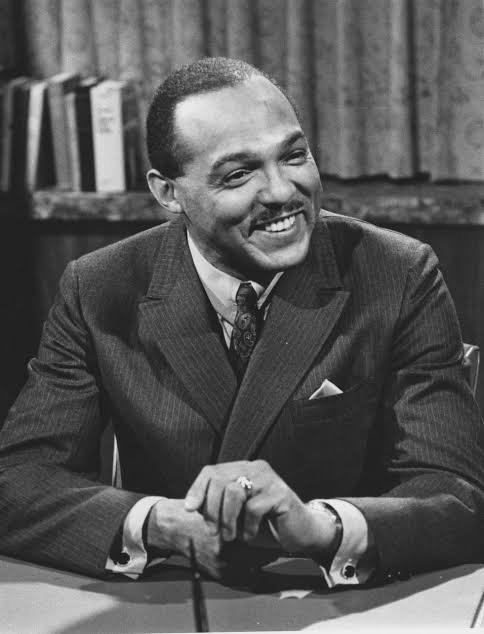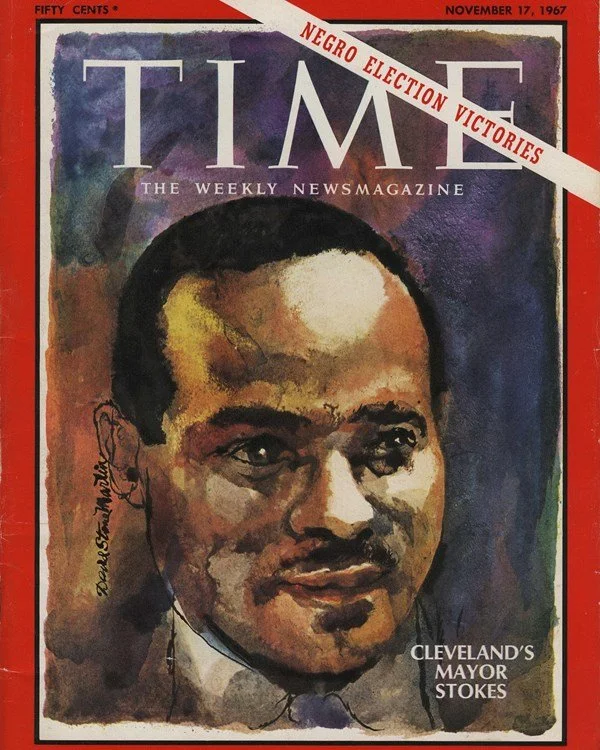Inspiring Figure: Carl Stokes
Political Leadership in an Environmental Crisis
Through several conversations with friends about water and our waterways, earlier this year I became familiar with the history of the US Clean Water Act of 1972. The Clean Water Act (CWA) establishes the structure for regulating (1) discharges of pollutants into the waters of the United States and (2) quality standards for surface waters.
The basis of the CWA was enacted in 1948 and was called the Federal Water Pollution Control Act, but the Act was significantly reorganized and expanded in 1972. "Clean Water Act" became the Act's common name with amendments in 1972.
The story of this important piece of legislation cannot be told without mentioning the contribution that a particular individual had toward enacting this key piece of environmental legislation: Carl Stokes.
He was the major of Cleveland from 1967 to 1971, and the first African American mayor of a major American city.
Beginnings
Carl Burton Stokes was born on June 21, 1927, in Cleveland, Ohio, to Charles and Louise Stokes.
Growing up in the Outhwaite Homes public housing project, Stokes experienced firsthand the challenges faced by many African Americans in the mid-20th century. He attended public schools in Cleveland, and joined the US Army after dropping out of high school.
Later on however, he returned home to finish his education and earned a scholarship to attend Case Western Reserve University. He graduated with a bachelor's degree in 1954 and went on to study law at Cleveland-Marshall Law School.
Inspired by bass-baritone artist, actor, football player, and civil rights activist Paul Robeson, 1962, Stokes entered politics and became the first African American elected to the Ohio House of Representatives.
His victory was a turning point in Ohio's political landscape and paved the way for greater representation of minorities in government. As a state legislator, Stokes focused on issues such as fair housing, education reform, and economic development for marginalized communities.
The Cuyahoga River Fire
In 1967, Stokes achieved another historic milestone when he was elected mayor of Cleveland, becoming the first African American to lead a major American city.
His election was deeply inspiring, as Stokes - the great-grandson of a slave - defeated Seth Taft, the grandson of a former US President, in a major election for political office.
It was a watershed moment for the civil rights movement, demonstrating that African Americans could attain positions of power and influence in mainstream politics.
It was during Carl Stokes’ tenure as mayor when the Cuyahoga River caught fire in 1969, causing a major environmental disaster.
The river (which flows into Lake Erie in Cleveland) had been heavily polluted for decades due to industrial waste and sewage dumping.
It had actually caught fire multiple times in the past due to the high levels of oil and other pollutants on its surface. But the 1969 fire gained significant attention because it happened during a time of growing environmental awareness, and Carl Stokes invited the media on a tour of the event, creating mass publicity over the issue. The fire became a symbol of the pollution problems plaguing many American waterways.
Legacy
The Cuyahoga River fire helped galvanize the environmental movement and led to the passage of the Clean Water Act in 1972, which aimed to regulate and reduce pollution in the nation's waterways.
It also contributed to the establishment of the federal Environmental Protection Agency (EPA) in 1970, which was tasked with enforcing environmental laws and regulations to protect human health and the environment.
Carl Stokes's remarkable journey from poverty to political prominence is a great example of the resilience and spirit of the American dream. He defied expectations and challenged the status quo, leaving a lasting impact on Cleveland and the nation as a whole.
His legacy is a reminder of the power of courage, determination, and leadership in the fight for a more just and fair society, including the protection of Earth’s ecosystems and natural resources.
Sources:
https://www.nps.gov/people/carl-b-stokes.htm
https://case.edu/ech/articles/s/stokes-carl-b



